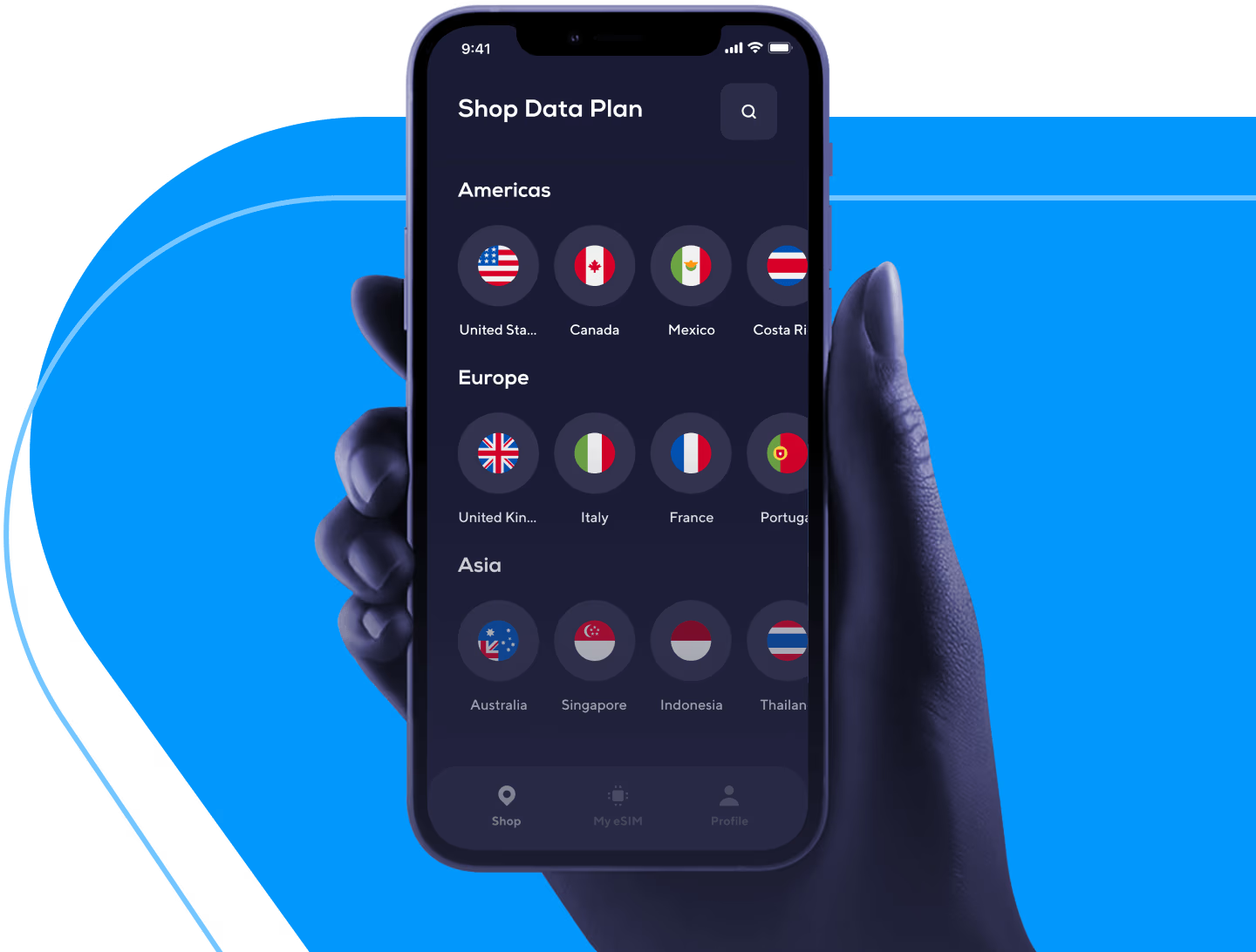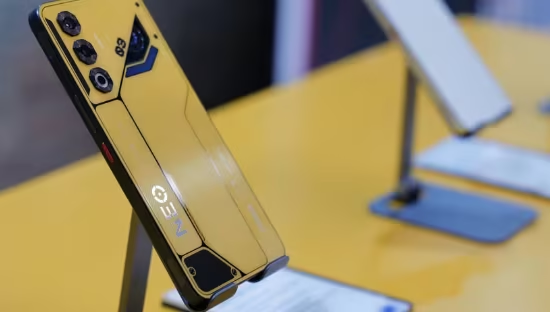
Why Mobile Carriers Fear eSIMs – And You Shouldn’t
You’ve probably noticed how phone companies talk about eSIMs like they’re some mysterious new experiment—when, in reality, they’re already everywhere. No plastic, no swapping, no waiting around for activation codes. You just tap “Add eSIM,” and within seconds, your phone connects to a new network. That’s it. mobile carriers eSIM
For travelers, freelancers, and anyone who hates overpaying for mobile data, eSIMs are freedom in your pocket. They let you switch providers instantly, test cheaper data plans, or go fully digital without ever stepping into a carrier store again.
And that’s exactly the problem—at least for the carriers.
Because every time you download a new eSIM instead of sticking with your old plan, they lose something they’ve always counted on: your dependence.
The truth is, big mobile carriers need you to believe eSIMs are risky, complicated, or not worth the effort. Because when travelers go digital, carriers lose their lock-in, their control, and a huge slice of their profit.
Let’s break it down.
The Old Game: Lock-in and Profit
For decades, carriers have built their empires on two simple levers: locking you in and charging you more than you realize.
- Lock-in: With physical SIM cards, switching carriers wasn’t exactly smooth. You had to go to a store, fill out forms, wait for activation, and maybe even unlock your phone. It was a hassle—and that hassle worked in the carriers’ favor. The harder it is to leave, the longer you’ll stay.
- Profit: Roaming charges have been carriers’ golden goose. We’ve all seen horror stories of someone going abroad and coming home to a €500 phone bill. Those charges aren’t tied to real costs anymore—they’re mostly markup. But as long as you’re too nervous or too busy to figure out alternatives, carriers rake it in.
Now enter the eSIM.
 eSIM = Freedom
eSIM = Freedom
eSIMs remove almost every barrier that kept you tethered to one carrier:
- Want to switch? You don’t need a plastic card—just download another eSIM profile.
- Traveling? Instead of paying €10/day for your carrier’s “travel pass,” you can get a local or global eSIM for a fraction of the price.
- Compare deals in real time? Absolutely. You can load multiple eSIMs and choose the best option on the fly.
That flexibility is terrifying for carriers. It’s like giving consumers the keys to walk out of their ecosystem at any moment.
And make no mistake: carriers hate consumer freedom when it means lower margins.
The Death of the Telco Shop?
Walk into any carrier store today and you’ll notice something: they’re not just selling connectivity—they’re selling dependence.
Those stores exist to keep you inside their ecosystem. Need a SIM card? Come in. Want to upgrade your plan? Let’s talk. Forgot your PIN? We’ll “fix” it for you — but we’ll also make sure you stay our customer.
eSIMs blow that model apart.
When a traveler or digital nomad can activate service instantly through an app, there’s no reason to visit a physical store. No sales pitch. No upsell. No “limited-time” plan that somehow renews forever.
For carriers, that’s terrifying. Because their brick-and-mortar shops aren’t cheap—they’re loaded with overhead costs, retail staff, and commission systems built around keeping customers inside. Every eSIM transaction that happens online means one less reason for someone to walk through those doors.
It’s the same story we saw in banking and travel: once customers realized they could do everything from their phones, the physical branches started to feel pointless.
Telco shops used to be the gatekeepers of connectivity. Now, they’re slowly becoming the relics of it.
The Subtle Sabotage
So, how do carriers react? They don’t come out and say, “Please don’t use eSIMs, we’ll lose money.” Instead, they play subtle games:
- They make activation confusing.
Some carriers bury the eSIM option deep in their apps or websites. Others force you to go to a physical store to activate what should be a digital product. The message? “See, this is complicated. Better stick with the plastic card you know.” - They limit features.
A few carriers allow you to obtain a physical SIM without issue, but quietly block or restrict eSIM support—especially for prepaid or travel-friendly plans. Why? Prepaid and travel users are the most likely to switch. - They spread FUD (Fear, Uncertainty, Doubt).
You’ll hear lines like: “eSIMs don’t always work abroad” or “You could lose service if you switch phones.” Technically, there can be hiccups, but in practice, eSIMs are often smoother than physical SIMs. But carriers highlight the risks, not the benefits. - They charge extra where they can.
Some carriers slap on “eSIM activation fees” as if scanning a QR code is some expensive process. Spoiler: it’s not. It’s just another way to slow adoption and squeeze a few more dollars out of hesitant customers.
Why Travelers Are the Biggest Threat
If you’re a frequent traveler, you’re public enemy number one in the eyes of big carriers. Okay, I’m exaggerating. A bit.
Why? Because travelers are the perfect eSIM audience:
- You don’t want to pay €100 for roaming on a weeklong trip.
- You value convenience—you’d rather scan a code than hunt for a SIM vendor in a foreign city.
- You’re tech-savvy enough to figure it out.
And here’s the kicker: once you try a travel eSIM and see how easy it is, you start asking bigger questions. “Why am I paying €70/month at home when I can get data for half that abroad?” That’s when carriers really start sweating.
The Apple Effect
Apple threw gasoline on this fire when it launched eSIM-only iPhones in the U.S. in 2022. No SIM slot. No turning back. For the first time, millions of users were forced into the eSIM ecosystem.
Carriers scrambled. Some complained it was too soon; others quietly updated their systems to keep up. But here’s the interesting part: Apple wasn’t thinking about carrier profits. Apple was thinking about Apple.
An eSIM-only future gives phone makers more design freedom and gives users more choice. The carriers? They’re stuck playing defense.
What Carriers Don’t Want You to Realize
Here’s the dirty secret: eSIMs don’t just help you abroad. They could help you save money at home, too.
Imagine this: You load up two eSIMs—your main number for calls and texts, plus a cheap data-only plan from another provider. You let the eSIM data do the heavy lifting and keep your “official” number just for contacts. Suddenly, your monthly bill is slashed in half.
That kind of behavior used to be impossible with physical SIMs (unless you had a dual-SIM phone). But with eSIM, it’s as easy as downloading an app.
If enough people did this, carriers’ core profits would shrink fast. That’s why they’re so invested in making you skeptical.
But isn’t eSIM adoption growing anyway?
Yes—and that’s the good news. Despite resistance, the tide is turning:
- More than 200 carriers worldwide now support eSIM.
- Travel eSIM marketplaces are exploding—companies like Airalo, Nomad, Airhub, Yesim, Roamless, Maya Mobile, Zetexa etc, and others are popping up everywhere.
- Even conservative business travelers are realizing it’s simpler to expense a €20 travel eSIM than explain a €300 roaming bill to finance.
The younger generation? They’ll barely remember what a physical SIM is. For them, the idea of walking into a store to buy connectivity will feel as outdated as buying CDs.
How to See Through the Carrier Spin
If you take away one thing, let it be this: when a carrier tells you eSIMs are “limited,” “too new,” or “not worth it,” remember who benefits from you believing that.
- If they say it’s complicated, ask yourself: is it actually complicated, or are they making it complicated?
- If they say it won’t work abroad, check a travel eSIM marketplace—you’ll see hundreds of supported countries.
- If they charge an “activation fee,” ask yourself what real cost they’re covering. Spoiler: none.
Once you look at it through the lens of “carriers make money when I stay put,” their messaging makes a lot more sense.
The Bottom Line about mobile carriers and eSIM
eSIMs are not perfect. Yes, some carriers still have gaps in support. Yes, transferring between phones can occasionally be a pain. But those are teething problems—not reasons to avoid the technology.
Big carriers want you to hate eSIMs because they strip away the friction that has protected their profits for decades. With eSIMs, you get freedom, transparency, and competition. They get thinner margins.
So the next time your carrier downplays eSIMs, remember: it’s not about your convenience. It’s about their bottom line.
And if you’re a traveler? Try one. The first time you land in another country, scan a QR code, and connect instantly—while your friends are still hunting for Wi-Fi to order an Uber—you’ll see why carriers are scared.
Because once you taste that kind of freedom, there’s no going back.













